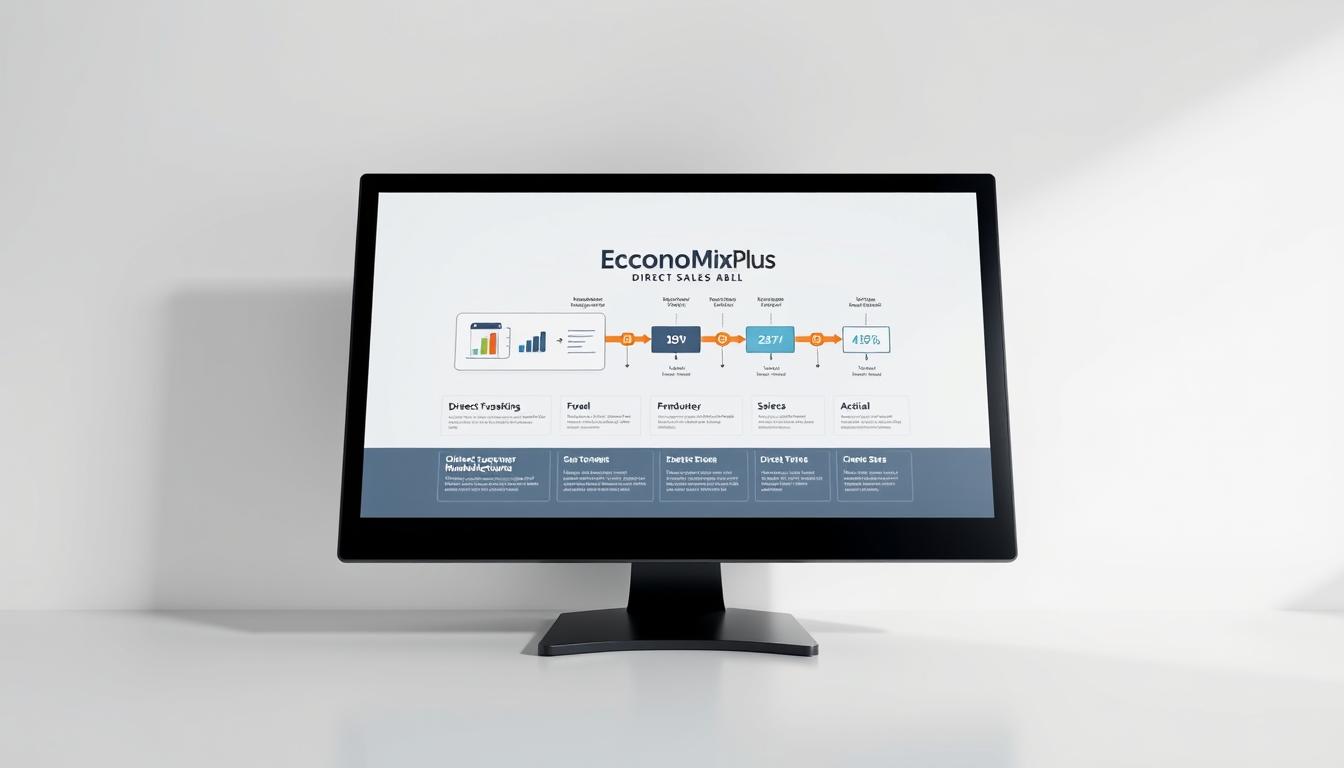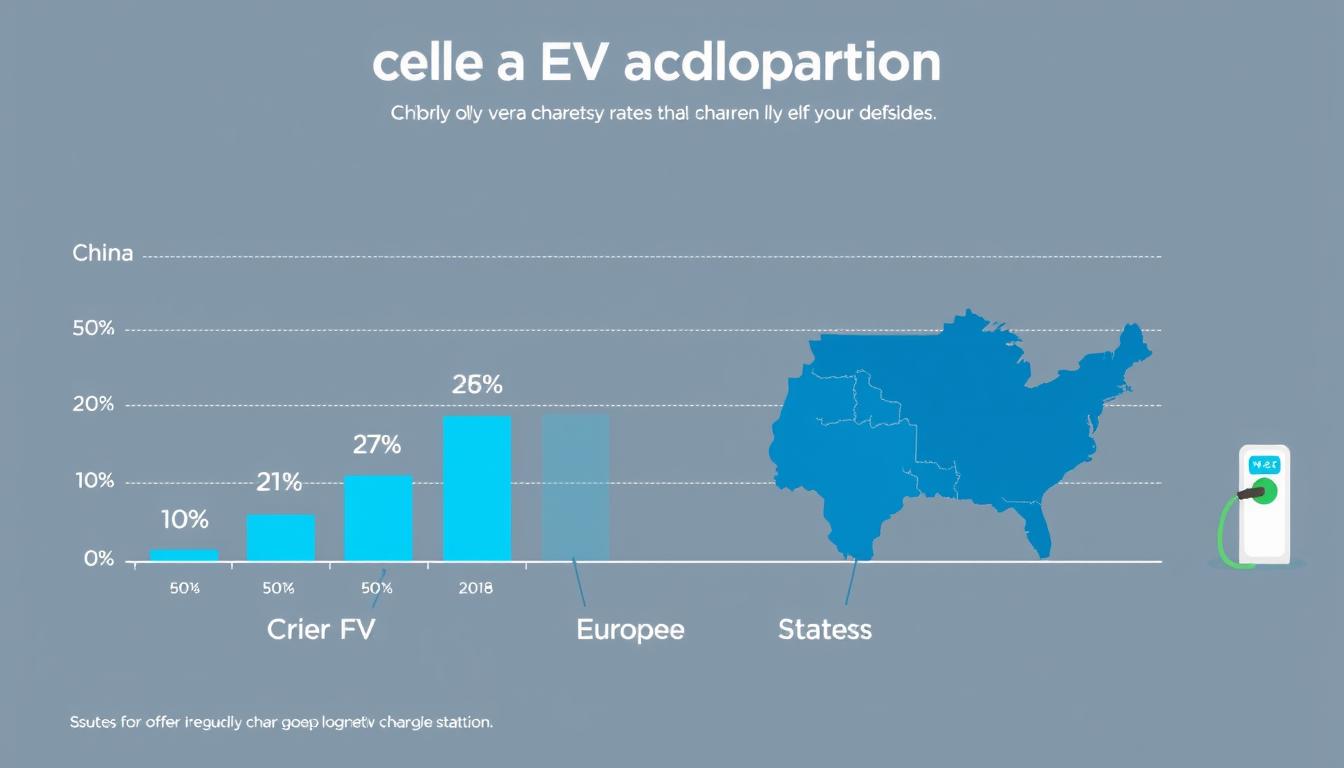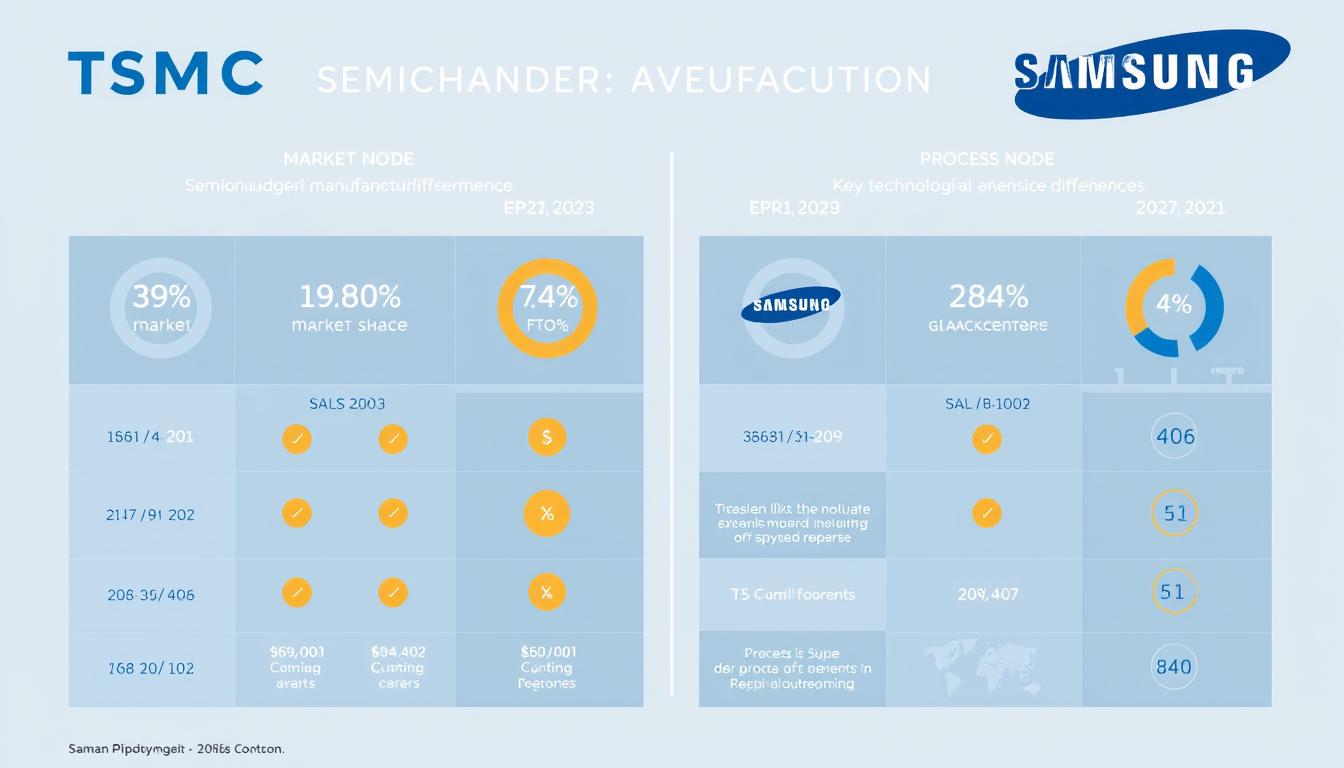What makes a global technology leader thrive in a competitive market? For one company, the answer lies in its unique approach to connecting with customers. With an annual revenue of $88.4 billion, this organization has built its success on a customer-centric business model that bypasses traditional retail channels.
Despite a 14% revenue decline in FY2024, the company’s operational strategies remain a focal point for analysis. Its build-to-order systems and efficient supply chain mechanics play a crucial role in driving economic results. This article explores how these elements contribute to sustained performance in a dynamic industry.
By focusing on inventory management and direct customer relationships, the organization demonstrates the power of innovation in business practices. Let’s dive deeper into the mechanics behind this approach and its impact on long-term growth.
Key Takeaways
- Global technology leader with $88.4 billion annual revenue.
- Customer-centric approach drives financial performance.
- 14% revenue decline in FY2024 highlights operational challenges.
- Build-to-order systems enhance efficiency.
- Supply chain mechanics are key to economic results.
Introduction to Dell’s Business Model
Founded in 1984, this organization has become a cornerstone of the tech industry. Starting in Texas, it has grown into a global leader, offering a wide range of products and services. Over the decades, it has adapted to the rapidly changing technological landscape, continuously innovating to meet the evolving needs of its customers.
Its innovative business model focuses on efficiency and customer satisfaction, leveraging direct sales and a build-to-order system that minimizes waste and maximizes responsiveness to market demands. This strategic approach has allowed the organization to maintain a competitive edge and drive growth even in challenging economic conditions.
Overview of Dell Technologies
The company operates in over 180 countries, serving both enterprise and consumer markets. Its extensive global presence allows it to tap into diverse customer needs and preferences, enabling tailored solutions that resonate with different demographics. Furthermore, it has expanded beyond hardware into areas like cybersecurity and financing, recognizing the increasing importance of data protection and financial services in today’s digital landscape. This diversification has not only strengthened its position in the technology sector but also mitigated risks associated with reliance on a single market segment, ensuring sustainable growth and resilience in an ever-evolving industry.
Key Business Segments
The organization is divided into three core divisions: Infrastructure Solutions Group (ISG), Client Solutions Group (CSG), and VMware. ISG focuses on servers and storage, while CSG handles PCs and workstations. VMware specializes in virtualization, a critical component of modern IT infrastructure.
In FY2024, CSG contributed 61% of the company’s revenue, despite challenges in the PC market. This highlights the importance of its diversified business model.
| Division | Focus Area | Revenue Contribution (FY2024) |
|---|---|---|
| Infrastructure Solutions Group (ISG) | Servers and Storage | $36 Billion |
| Client Solutions Group (CSG) | PCs and Workstations | $48 Billion |
| VMware | Virtualization | N/A |
By continuously evolving its offerings, the company remains a key player in the global technology landscape. Its ability to adapt to market demands ensures long-term success.
The Evolution of Dell’s Direct Sales Model
A groundbreaking approach can redefine how businesses connect with their audience. One such strategy, pioneered in 1984, revolutionized the tech industry by eliminating traditional retail channels. This method allowed the company to build direct relationships with its customers, offering tailored solutions and faster delivery times.
Origins of the Direct Sales Approach
The concept began with a simple idea: selling upgraded PCs directly to consumers. Starting from dorm-room operations, the company quickly scaled to become a Fortune 500 supplier. By bypassing retailers, it gained a competitive advantage in pricing and customization.
This approach also introduced virtual integration, reducing inventory costs by 90% compared to traditional models. The ability to maintain a 6x inventory turnover rate further solidified its efficiency.
How the Model Differentiates Dell
Unlike competitors reliant on retail partnerships, the company focuses on direct customer interactions. This strategy enables 36-hour order-to-shipment timelines, ensuring faster service. Customization capabilities allow customers to design products that meet their specific needs.
By eliminating middlemen, the company saves $3 billion annually. These savings are reinvested into innovation and marketing, strengthening its market position.
| Aspect | Traditional Model | Direct Sales Model |
|---|---|---|
| Inventory Turnover | 1x | 6x |
| Cost Savings | 10% | 90% |
| Order-to-Shipment Time | 7 Days | 36 Hours |
This strategy not only enhances efficiency but also fosters stronger customer loyalty. By continuously evolving, the company remains a leader in the tech industry.
How Dell’s Direct Sales Model Affects Its Economic Growth
In a rapidly evolving tech landscape, one strategy stands out for its effectiveness. The approach of connecting directly with customers has proven to be a game-changer, allowing for immediate feedback and adaptation to consumer preferences. This method not only drives revenue but also strengthens market position by fostering deeper relationships and trust with the customer base, which is essential for long-term success.

Impact on Revenue and Market Share
The direct sales model contributes to over 85% of commercial PC sales. This strategy has helped maintain a #3 global PC market position, even in challenging times. Despite a 28% industry-wide drop in PC sales in 2023, the company retained its share.
Operating margins in the Client Solutions Group (CSG) stand at 18%, compared to the industry average of 5%. This highlights the efficiency of the approach. Additionally, the adoption of this model has driven a 7.7% CAGR since 2018.
Role in Competitive Advantage
Real-time demand data plays a crucial role in R&D and production planning. This ensures that products align with customer needs. Dynamic pricing algorithms save $1.2 billion annually, further enhancing profitability.
By focusing on success through innovation, the company stays ahead of competitors. The ability to adapt to changing market conditions ensures sustained growth.
Dell’s Supply Chain Strategies
Efficiency in operations often separates industry leaders from competitors. A robust supply chain is critical for delivering products quickly and reducing costs. This section explores the strategies that make this possible. A well-structured supply chain not only streamlines production but also enhances responsiveness to market fluctuations.
By leveraging advanced technologies and data analytics, companies can forecast demand more accurately, ensuring that they are not overproducing or understocking their products. Furthermore, a resilient supply chain enables organizations to quickly adapt to unexpected disruptions, whether from supplier issues or shifts in consumer preferences. This adaptability is essential in maintaining a competitive edge in today’s fast-paced market landscape.

Direct Sales Model
The direct sales approach plays a vital role in the supply chain. By eliminating intermediaries, the company ensures faster delivery and better control over inventory. This method also allows for real-time adjustments based on customer demand.
Build-to-Order Manufacturing
Configure-to-order systems enable 72-hour production cycles. This approach reduces waste and ensures products meet specific customer needs. Just-in-time manufacturing has saved $650 million annually since 2020.
Efficient Inventory Management
With a 5-day raw material inventory, the company minimizes storage costs. Vendor-managed inventory (VMI) systems reduce stockouts and improve efficiency. IoT-enabled quality control has cut waste by 40%.
Collaborative Relationships with Suppliers
A network of 4,000+ suppliers ensures a steady flow of components. Digital platforms integrate 98% of suppliers, enabling 2-hour replenishment cycles. Third-party logistics (3PL) partnerships achieve 92% on-time delivery globally.
Benefits of Dell’s Supply Chain Management
Effective supply chain management is a cornerstone of operational success in the tech industry. It ensures products reach customers quickly while minimizing costs. This approach also enhances efficiency and fosters long-term growth. By streamlining processes and utilizing advanced technologies, companies can respond to market demands with agility.
Moreover, a well-managed supply chain allows for better inventory control, reducing excess stock and associated holding costs. This not only improves cash flow but also ensures that resources are allocated efficiently, ultimately leading to higher customer satisfaction and loyalty. In an industry characterized by rapid innovation and fierce competition, maintaining a robust supply chain is essential for sustaining a competitive edge and driving business success.

Cost Reduction and Efficiency Improvement
By optimizing logistics, the company achieves 12% lower costs compared to competitors. Advanced systems like AI-driven demand forecasting ensure 98% accuracy in planning. This reduces waste and improves overall efficiency.
Just-in-time manufacturing saves $650 million annually. A 5-day raw material inventory minimizes storage expenses. These strategies contribute to a 22% faster time-to-market than competitors like HP and Lenovo.
Enhanced Customer Satisfaction
Customization options score a 94% satisfaction rate among customers. Omnichannel integration ensures parity between B2B and B2C solutions. This flexibility meets diverse needs, driving loyalty.
Perfect order metrics have improved by 15% since 2022. This ensures customers receive their orders accurately and on time. Such reliability strengthens trust and satisfaction.
Flexibility in Meeting Market Demands
The supply chain adapts quickly to changing demands. For example, a 500,000-unit emergency order for the education sector was fulfilled in just 10 days. This showcases the system’s flexibility.
Vendor-managed inventory (VMI) systems reduce stockouts. IoT-enabled quality control cuts waste by 40%. These innovations ensure the company remains agile in a competitive market.
| Metric | Performance |
|---|---|
| Logistics Cost Savings | 12% Lower Than Competitors |
| Customer Satisfaction Score | 94% |
| Time-to-Market Improvement | 22% Faster |
| Perfect Order Metrics | 15% Improvement Since 2022 |
Challenges in Dell’s Supply Chain Management
Maintaining a competitive edge in the tech industry requires overcoming significant operational hurdles. One of the most pressing issues is the reliance on a single market segment, which can create vulnerabilities. This dependency not only exposes the company to fluctuations in demand but also limits its ability to pivot in response to emerging trends and consumer preferences.
Additionally, external factors like geopolitical tensions and global disruptions add complexity to the equation. For instance, trade wars and tariffs can impact supply chains, making it essential for companies to develop robust contingency plans. The rapid pace of technological advancements also necessitates continuous innovation and adaptation, as falling behind can result in lost market share. Therefore, diversifying product offerings and exploring new markets is crucial to mitigate risks and sustain growth in an increasingly volatile environment.
Dependence on the PC Market
The organization’s revenue heavily depends on the PC segment, with 68% of income tied to this area. While this focus has driven success, it also poses a strategic risk. For example, the 2021 chip shortage caused over $1 billion in revenue loss, highlighting the dangers of over-reliance on one market.
In Q4 2023, revenue from the Client Solutions Group (CSG) dropped by 23% year-over-year. This decline underscores the need for diversification to mitigate future risks.
Intense Competition in the Technology Industry
The tech industry is fiercely competitive, with rivals like Lenovo and HP offering lower prices in emerging markets. These competitors enjoy a 5% pricing advantage, making it harder to maintain market share. Component costs have also risen by 18% compared to pre-pandemic levels, further squeezing margins.
To stay ahead, the company must innovate and streamline its supply chain to reduce costs and improve efficiency.
Vulnerability to Supply Chain Disruptions
Global disruptions, such as port congestion in 2022, caused 14% delivery delays in the Asia-Pacific region. Geopolitical factors also affect 35% of component sourcing, creating additional challenges. These issues highlight the need for a more resilient supply chain.
By addressing these vulnerabilities, the organization can better meet demand and maintain its position in the industry.
Dell’s Focus on Innovation
Staying ahead in the tech industry requires constant innovation and forward-thinking strategies. Companies that invest heavily in research and development (R&D) often lead the pack, delivering cutting-edge solutions that meet evolving customer needs. This commitment to R&D not only fosters the creation of new products but also enhances existing ones, ensuring that they remain relevant in a rapidly changing market.
By actively seeking and incorporating customer feedback, these companies can tailor their innovations to address specific pain points, thus gaining a competitive edge. Furthermore, sustained investment in R&D can lead to breakthroughs that redefine industry standards and open new markets, solidifying a company’s position as a leader in the tech landscape.
Investment in Research and Development
In 2023, the organization allocated $7.4 billion to R&D, showcasing its commitment to innovation. This investment has resulted in over 30,000 patents, solidifying its position as a leader in technology. Projects like Helix, a collaboration with NVIDIA, highlight its focus on artificial intelligence (AI) and machine learning (ML).
Edge computing solutions have driven a 22% growth in the Infrastructure Solutions Group (ISG). These advancements enable faster data processing and improved performance for businesses worldwide.
Introduction of New Technologies
The APEX cloud platform has seen rapid adoption, with over 1 million users. This platform offers scalable and flexible solutions, catering to diverse industry needs. Additionally, 40% of the R&D budget is dedicated to AI and ML projects, ensuring the company remains at the forefront of technology.
Partnerships with institutions like MIT focus on quantum computing, a field with immense potential. The PowerEdge server line, known for its premium pricing capability, continues to deliver high performance, commanding a 19% price premium in the market.
Dell’s Global Presence
Expanding globally requires strategic planning and adaptability in today’s competitive environment. Dell has established a strong foothold in various regions, leveraging its innovative strategies to drive growth and capture new opportunities. This involves conducting thorough market research to understand local consumer preferences and tailoring products to meet specific regional demands.
Additionally, Dell emphasizes the importance of building strong relationships with local partners, which enhances its ability to navigate diverse regulatory landscapes and cultural nuances. This section explores its expansion in emerging markets and key partnerships that have shaped its global success.
Expansion in Emerging Markets
Emerging markets play a crucial role in Dell’s global strategy. In 2023, the Asia-Pacific and Japan (APJ) region saw a 34% revenue growth, highlighting the company’s focus on these areas. India, for instance, has become a manufacturing hub with a capacity of 1 million units per month.
Vietnam has also emerged as a key location, reducing dependency on China by 40%. This diversification ensures stability in the supply chain and strengthens Dell’s ability to meet global demand.
Strategic Partnerships and Acquisitions
Partnerships and acquisitions have been instrumental in Dell’s global expansion. Since 2016, the company has completed over 60 acquisitions, including the landmark $67 billion purchase of EMC. These moves have enhanced its capabilities in cloud computing, storage, and virtualization.
The Alibaba Cloud partnership has captured 15% of China’s hybrid cloud market. Additionally, the acquisition of Boomi has improved SaaS integration, offering seamless solutions for businesses worldwide.
In the Middle East and Africa, Dell has achieved a 22% growth in the government sector. This success underscores its ability to adapt to diverse regional needs.
| Region | Key Achievement |
|---|---|
| Asia-Pacific and Japan (APJ) | 34% Revenue Growth in 2023 |
| India | 1M Units/Month Manufacturing Capacity |
| Vietnam | 40% Reduction in China Dependency |
| Middle East and Africa | 22% Government Sector Growth |
By focusing on emerging markets and strategic collaborations, Dell continues to strengthen its position as a global leader in the industry. These efforts ensure sustained growth and resilience in a dynamic market.
Customer-Centric Approach
Building strong relationships with customers is a cornerstone of success in the tech industry. Companies that prioritize their needs and deliver exceptional service often see higher satisfaction and loyalty. This approach not only drives repeat business but also strengthens brand reputation. Furthermore, fostering these relationships allows companies to gain valuable insights into customer preferences and pain points, enabling them to tailor their offerings more effectively.
By actively engaging with clients and seeking feedback, businesses can adapt their strategies to better meet evolving demands, which ultimately leads to a more loyal customer base. In a competitive landscape, where alternatives are readily available, maintaining a strong connection with customers can be the differentiating factor that sets a company apart from its competitors.
Importance of Customer Service
Exceptional customer service is a key differentiator in competitive markets. ProSupport Plus, for example, achieves a 98% satisfaction rate by offering 24/7 premium support with response times under two hours. This level of commitment ensures that customers receive timely assistance whenever they need it.
AI-powered chat systems have further improved the experience, boosting customer satisfaction scores by 45%. These advancements demonstrate how technology can enhance service delivery and meet evolving needs.
Customization and Personalization
Personalized solutions are another critical aspect of a customer-centric approach. With over 250 configuration options per product, customers can design devices that meet their specific requirements. Modular designs enable more than 500 million possible PC configurations, offering unparalleled flexibility.
The configuration portal has driven a 22% repeat purchase rate, showing how tailored solutions foster loyalty. Dell Technologies Unified Workspace adoption trends further highlight the growing demand for personalized IT environments.
“The ability to customize products and services ensures that customers feel valued and understood.”
| Feature | Benefit |
|---|---|
| ProSupport Plus | 98% Satisfaction Rate |
| AI Chat Systems | 45% CSAT Improvement |
| Configuration Options | 250+ Per Product |
| Repeat Purchase Rate | 22% from Portal Users |
By focusing on customer needs and delivering tailored solutions, companies can build lasting relationships and drive sustained growth. This approach ensures that every interaction adds value and strengthens trust.
Financial Performance of Dell
Understanding financial health is critical for any organization aiming for long-term success. This section delves into key metrics and strategies that shape financial outcomes, focusing on trends in revenue, cash flow, and profitability. A comprehensive grasp of these elements not only aids in assessing current performance but also plays a pivotal role in forecasting future growth and sustainability. By analyzing revenue streams, companies can identify which products or services are driving sales and where adjustments may be necessary.
Similarly, monitoring cash flow is essential for ensuring that operational costs are met while also funding strategic initiatives. Profitability, on the other hand, reflects the effectiveness of a company’s overall strategy and operational efficiency, providing insights into areas that may require optimization or investment.
Revenue and Profitability Trends
In FY2024, the company reported $88.4 billion in revenue, marking a 14% decline from the previous year. Despite this, the 5-year revenue CAGR stands at 3.4%, showcasing resilience in a contracting market. Gross margins remain steady at 18%, achieved through disciplined pricing strategies.
Operating cash flow reached $8.7 billion, reflecting efficient management of resources. Additionally, $10 billion in debt has been repaid since 2021, reducing financial liabilities and improving stability.
Cash Flow Management
Optimizing working capital has freed up $3 billion annually, enhancing liquidity. This strategy ensures funds are available for innovation and growth initiatives. AI-driven project management has also contributed to a 35% improvement in R&D efficiency, reducing costs while accelerating development timelines.
By maintaining a strong focus on financial discipline, the company continues to navigate challenges and drive sustainable growth.
Dell’s Role in the Cloud Computing Market
Cloud computing has become a cornerstone of modern business operations. It offers scalable and efficient solutions that meet the growing demands of enterprises. This technology is reshaping how organizations manage their IT infrastructure and deliver services.
Growth in Data Center Solutions
The Infrastructure Solutions Group (ISG) achieved a 22% growth in 2023, driven by the increasing demand for data center solutions. PowerEdge servers, a key product line, now hold a 40% share in the hyperscaler market. This success highlights the company’s ability to deliver high-performance technology tailored to enterprise needs.
Edge computing solutions are also gaining traction, supporting the rollout of 5G networks. These innovations ensure faster data processing and improved connectivity for businesses worldwide.
Opportunities in Cloud Services
The APEX as-a-service platform has reached $1 billion in annual recurring revenue (ARR). This platform offers flexible and scalable cloud services, catering to diverse industry needs. Its adoption by 60% of Fortune 500 companies underscores its reliability and efficiency.
Partnerships, such as the Azure Stack HCI collaboration, have driven 35% growth in hybrid cloud deployments. These alliances enhance the company’s ability to deliver integrated solutions that meet evolving customer demands.
APEX Flex on Demand users report a 90% retention rate, showcasing the platform’s ability to meet long-term business needs. This success demonstrates the company’s commitment to innovation and customer satisfaction.
| Initiative | Impact |
|---|---|
| PowerEdge Servers | 40% Hyperscaler Market Share |
| APEX Platform | $1B ARR |
| Azure Stack HCI | 35% Hybrid Cloud Growth |
| APEX Flex on Demand | 90% Retention Rate |
Dell’s Contribution to Sustainability
Sustainability is no longer an option but a necessity for modern businesses. Companies that prioritize environmental responsibility not only reduce their ecological footprint but also gain a competitive edge in the marketplace. This proactive approach not only fosters customer loyalty but also attracts investors who are increasingly focused on sustainability metrics. This section explores how one organization is leading the way in sustainable practices, demonstrating that integrating eco-friendly initiatives can drive innovation and operational efficiency.
Environmental Initiatives
The company has set ambitious 2030 Impact Goals, including 100% recycled packaging for all its products. Since 2008, it has recycled 1.8 billion pounds of materials, showcasing its commitment to environmental management. These efforts are part of a broader strategy to minimize waste and promote eco-friendly practices.
Closed-loop plastics are now used in 125 product lines, reducing the need for virgin materials. Carbon-neutral shipping is another key initiative, covering 60% of deliveries. Energy-efficient PowerEdge servers have also been introduced, cutting total cost of ownership (TCO) by 40% while reducing energy consumption.
Recycling and Circular Economy Practices
The XPS 13 Plus design is 98% recyclable, reflecting the company’s focus on circular economy principles. Smart manufacturing techniques have led to a 30% reduction in emissions, further enhancing sustainability. These practices not only benefit the environment but also drive innovation in product development.
By integrating recycled materials into its solutions, the organization demonstrates how businesses can balance profitability with environmental responsibility. These efforts ensure long-term sustainability while meeting customer demands for eco-conscious products.
Dell’s Response to Technological Changes
The rapid evolution of technology demands constant adaptation and forward-thinking strategies. In today’s fast-paced world, companies that embrace these changes often lead the way in innovation, delivering cutting-edge solutions that meet modern demands. This continuous cycle of advancement not only involves adopting new tools and platforms but also rethinking traditional business models to stay relevant. This section explores how one organization is staying ahead in the ever-changing tech landscape, focusing on the proactive measures taken to integrate emerging technologies and foster a culture of innovation.
Adaptation to IoT and Edge Computing
Edge computing and IoT are transforming industries by enabling faster data processing and real-time decision-making. In 2023, edge solutions grew by 46%, driven by the need for efficient and scalable technology. Over 500,000 IoT gateways have been deployed in smart factories, enhancing automation and reducing operational costs.
The edge-native PowerScale F210 storage systems have been introduced to meet the growing demand for high-performance storage. These products ensure seamless data management, even in the most demanding environments. Smart Manufacturing 4.0 implementations have also reduced defects by 25%, showcasing the potential of IoT in industrial settings.
Focus on AI and Machine Learning
Artificial intelligence and machine learning are at the forefront of innovation. Precision workstations now offer 30% faster ML training, enabling businesses to develop advanced AI models more efficiently. The NVIDIA partnership has further strengthened capabilities, delivering AI workstation solutions that cater to diverse needs.
Project Fort Zero, a federal AI security initiative, highlights the organization’s commitment to leveraging AI for critical applications. These advancements not only enhance development processes but also ensure that businesses remain competitive in a rapidly evolving market.
Dell’s Marketing Strategy
In today’s digital-first world, effective marketing strategies are essential for staying competitive. Companies that leverage innovative approaches can connect with their audience more effectively, driving both engagement and revenue. By utilizing data analytics, social media platforms, and personalized content, organizations can tailor their messages to resonate with specific demographics. This section explores how one organization has mastered the art of modern marketing, showcasing techniques that not only attract attention but also foster loyalty among consumers.
Direct-to-Customer Marketing
Direct-to-customer marketing focuses on building personal relationships with buyers. This approach allows for tailored messaging and a deeper understanding of customer needs. By eliminating intermediaries, companies can deliver more relevant and timely communications.
Account-based marketing is a key component, especially for enterprise clients. This strategy targets specific accounts with personalized campaigns, resulting in higher engagement and conversion rates. Predictive analytics further enhance this approach, driving a 35% increase in conversions.
Digital Transformation in Marketing
The shift to digital has revolutionized how companies reach their audience. With 80% of leads coming from digital channels, it’s clear that online platforms are critical for success. Social media plays a significant role, with over 15 million engagements monthly.
Virtual reality product configurators have also gained traction, offering an immersive shopping experience. TikTok campaigns have successfully reached the 18-24 demographic, showcasing the power of creative content. Additionally, 40% of the marketing budget is allocated to performance-driven strategies, ensuring measurable results.
| Initiative | Impact |
|---|---|
| Account-Based Marketing | Higher Engagement |
| Predictive Analytics | 35% Conversion Increase |
| Virtual Reality Configurators | Immersive Experience |
| TikTok Campaigns | Reached 18-24 Demographic |
| Performance Marketing | 40% Budget Allocation |
By embracing digital transformation, companies can stay ahead in a rapidly evolving landscape. These strategies not only enhance customer engagement but also drive long-term growth.
Lessons from Dell’s Business Model
Innovative business strategies often set the stage for long-term success in competitive markets. One such approach, adopted by 30% of Fortune 100 manufacturers, has proven its effectiveness across various sectors. This section explores the key takeaways and how this strategy can be applied in different industries.
Key Takeaways for Other Companies
Companies looking to replicate this success should focus on customization and direct customer relationships. For example, the automotive industry has adapted build-to-order systems, reducing waste and improving efficiency. Similarly, medical device manufacturers use customization blueprints to meet specific client needs.
SaaS companies have embraced customer intimacy, enhancing user experiences and driving loyalty. Third-party logistics (3PL) partnerships have mirrored supplier integration, ensuring seamless operations. ROI calculators show a 22% efficiency gain for adopters, proving the value of this approach.
Applicability in Different Industries
The principles of this business model are versatile. In the automotive sector, build-to-order systems have streamlined production. Medical device companies use customization to deliver tailored solutions, improving patient outcomes.
SaaS providers focus on customer intimacy, offering personalized services that drive retention. 3PL partnerships enhance supply chain efficiency, ensuring timely deliveries. These examples highlight the broad applicability of this strategy across diverse sectors.
For more insights into how this business model drives revenue, explore the business model and revenue streams.
Conclusion
Over four decades, the company has transformed from a PC startup into a global tech leader. Its direct sales model and efficient supply chain have been key drivers of this evolution. With a 6.8% operating margin advantage over competitors, it continues to set benchmarks in the industry.
Adaptability remains a cornerstone of its strategy, especially in digital-first economies. Emerging technologies like 5G and edge computing are poised to be the next frontiers for growth, ensuring the company stays ahead of the curve.
Ultimately, its customer-centric approach has been the foundation of its success. By prioritizing customer needs and delivering tailored solutions, it creates sustainable value in a competitive market.














